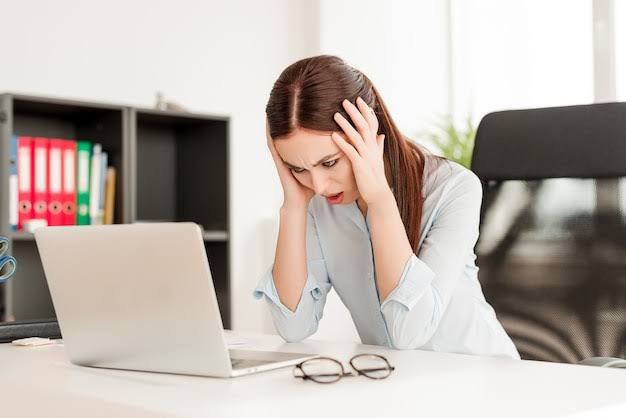Desktop/Computer
20 Ways to Fix a Frozen Windows Desktop (It Works!)

A frozen Windows desktop can be incredibly frustrating, causing delays and hindering productivity. When your computer becomes unresponsive, it’s important to address the issue promptly to get things back to normal. In this article, we’ll be looking at 20 ways to fix a frozen Windows desktop and restore your system’s functionality.
20 Ways to Fix a Frozen Windows Desktop (or Computer)

1. Restart the computer: A simple restart can often resolve minor software glitches and refresh system resources.
2. Check for Windows updates: Keeping your operating system up-to-date is essential for stability. Check for and install any available Windows updates that may address freezing issues.
3. Close unnecessary programs and processes: Multiple running programs and processes can consume system resources and lead to freezing. Close unnecessary applications to free up memory and CPU usage.
4. Disconnect external devices: Sometimes, incompatible or malfunctioning external devices can cause a frozen desktop. Disconnect any peripherals, such as USB drives or printers, and check if the freezing persists.
5. Clear temporary files and folders: Accumulated temporary files can slow down your computer and contribute to freezing. Use the built-in disk cleanup utility to remove unnecessary files.
6. Run a System File Checker (SFC) scan: The SFC tool scans and repairs system files for errors or corruption. Open the Command Prompt as an administrator and type “sfc /scannow” to initiate the scan.
READ MORE: How To Protect Android Device From Malware
Can We Go To Heaven With Tattoos?
7. Perform a disk cleanup: Use the Disk Cleanup utility to clean up system files and unnecessary files on your hard drive. This can help optimize system performance and prevent freezing.
8. Check for driver updates: Outdated or incompatible device drivers can cause freezing issues. Visit the manufacturer’s website or use driver update software to ensure all drivers are up-to-date.
9. Run a malware scan: Malware infections can disrupt system processes and cause freezing. Run reputable antivirus or anti-malware software to scan and remove any potential threats.
10. Adjust power settings: Some power-saving features may interfere with system performance. Adjust power settings to ensure your computer is operating at maximum performance rather than saving energy.
11. Disable unnecessary startup programs: Too many programs launching at startup can slow down your computer and contribute to freezing. Use the Task Manager to manage startup programs and disable unnecessary ones.
12. Increase virtual memory: Insufficient virtual memory can lead to freezing. Adjust virtual memory settings to allocate more space on your hard drive for virtual memory.
13. Adjust visual effects settings: Windows offers various visual effects, but enabling too many can strain system resources. Adjust the visual effects settings to a more balanced or performance-oriented configuration.
14. Remove unnecessary files and applications: Regularly clean up your system by deleting unnecessary files and uninstalling unused applications. This helps free up storage space and reduces the load on your system, minimizing the chances of freezing.
15. Upgrade hardware components: If you consistently experience freezing issues, it might be time to consider upgrading your hardware. Adding more RAM, replacing an aging hard drive with a solid-state drive (SSD), or upgrading your graphics card can significantly improve system performance and reduce the likelihood of freezing.

16. Disable unnecessary Windows services: Windows runs numerous background services, some of which may not be essential for your specific needs. Use the Services Manager to disable unnecessary services, freeing up system resources.
17. Run a disk defragmentation: Over time, files on your hard drive can become fragmented, impacting system performance. Run a disk defragmentation tool to optimize file placement and improve overall system speed.
18. Check for overheating issues: Excessive heat can cause your computer to freeze. Ensure proper airflow, clean the cooling fans, and monitor temperatures using specialized software. If necessary, consider using a cooling pad or upgrading your system’s cooling solution.
19. Restore Windows to a previous state: If freezing issues started after specific changes or installations, you can use the System Restore feature to revert your computer back to a previous state when it was working correctly.
20. Seek professional assistance if necessary: If you’ve exhausted all troubleshooting options and your computer continues to freeze, it may be time to seek professional help. A qualified technician can diagnose and resolve underlying hardware or software issues.
Conclusion
In this article, we covered 20 ways to fix a frozen Windows desktop. By following these steps, you can optimize system performance, address software glitches, and minimize the chances of freezing in the future.
FAQs
1. Why does my Windows desktop freeze?
Windows desktops can freeze due to various reasons, including software glitches, incompatible drivers, malware infections, insufficient system resources, or hardware issues.
2. Do I need to update my drivers regularly to prevent freezing?
Keeping your drivers up-to-date is important for system stability. Regularly check for driver updates, especially when experiencing freezing issues.
3. Can removing unnecessary files and applications improve system performance?
Yes, removing unnecessary files and uninstalling unused applications can free up storage space and improve system performance, reducing the chances of freezing.
4. What should I do if my computer keeps freezing even after trying the troubleshooting steps?
If freezing persists, it’s recommended to seek professional assistance from a qualified technician who can diagnose and resolve underlying hardware or software issues.
5. Is it necessary to upgrade my hardware to fix freezing issues?
Upgrading hardware components, such as adding more RAM or replacing an aging hard drive, can significantly improve system performance and reduce the likelihood of freezing. However, it’s not always necessary and should be considered based on individual needs and budget constraints.



















